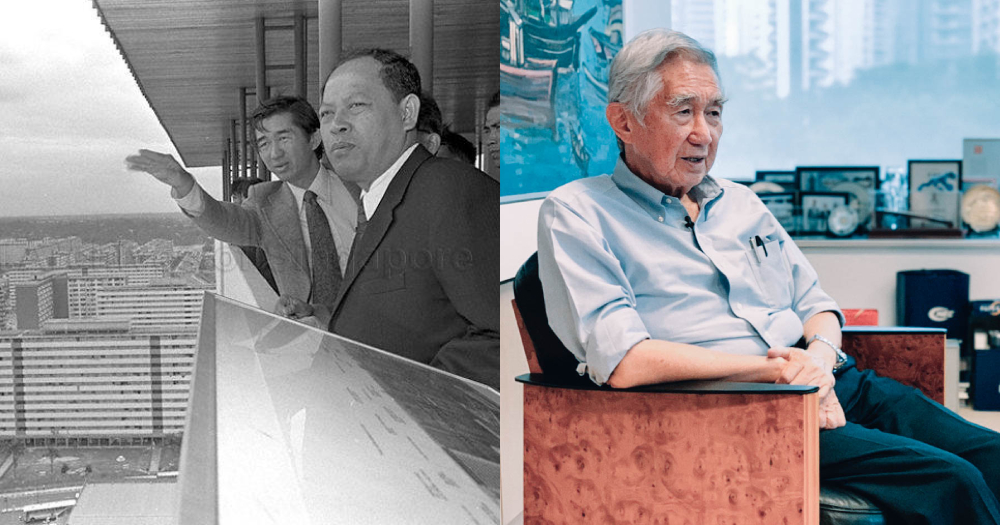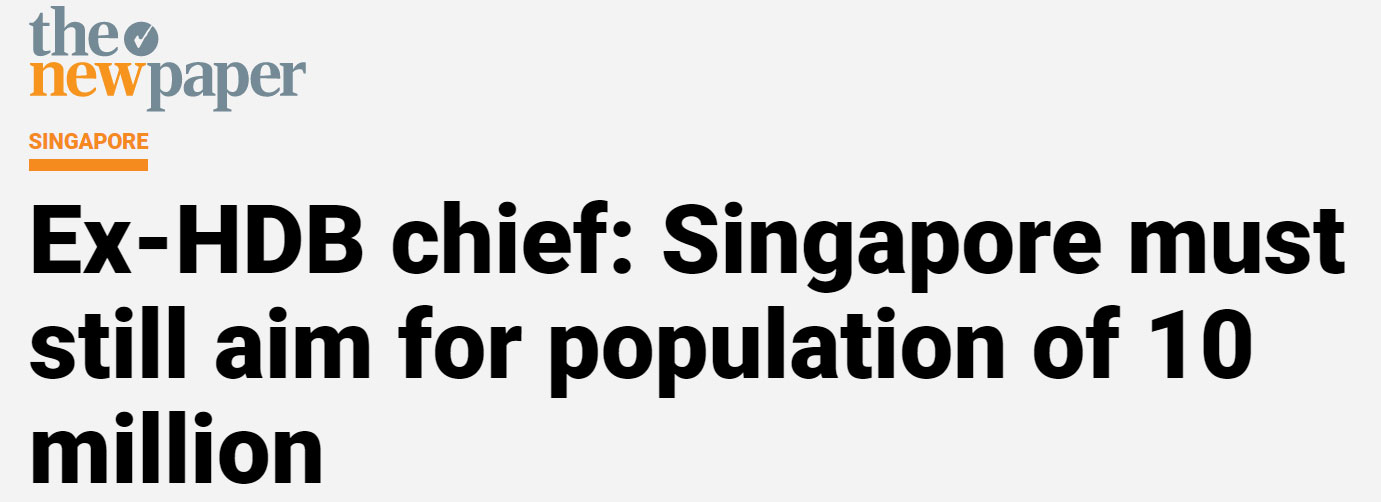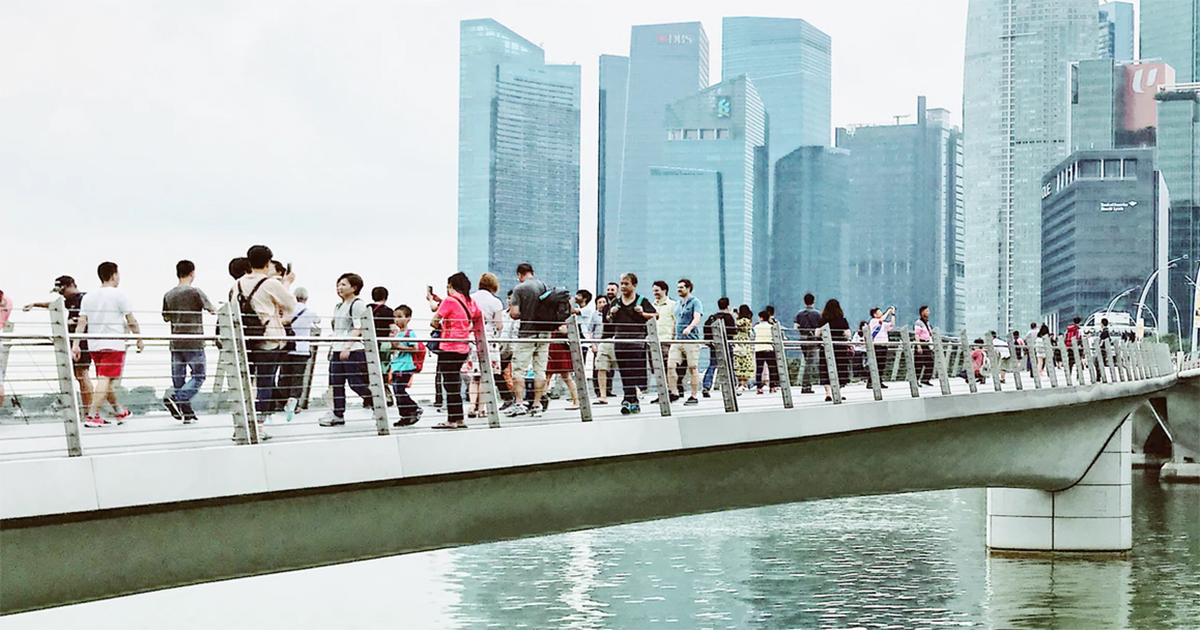Context
The 10 million population figure has been bandied about Singapore more intensely since July 1, 2020, following a GE2020 political debate featuring candidates from one ruling party and three opposition parties.
One heated exchange involved Singapore Democratic Party (SDP) chief Chee Soon Juan, who claimed that the government plans to increase the population to 10 million by bringing in more foreigners, and asked if this was indeed the path for the future.
His suggestion was repeatedly shot down by the People's Action Party (PAP) candidate Vivian Balakrishnan, who categorically stated: "We will never have 10 million. We won't even have 6.9 million. The government doesn't have a target for the population."
Vivian later said that Chee's statement about the 10 million population target "is a false statement", calling it "falsehoods" at least twice in the debate.
Doubling down by Chee
Shortly after the debate, Chee cited a Straits Times report in his Facebook post.
The ST report was of a dialogue Deputy Prime Minister Heng Swee Keat had with around 700 students at Nanyang Technological University in March 2019.
Chee highlighted two paragraphs in his post: "Singapore's population density is not excessive, he (DPM Heng) said, noting that other cities are a lot more crowded in terms of liveable space. He cited former chief planner Liu Thai Ker, who said in 2014 that Singapore should plan for 10 million people for it to remain sustainable in the long term."
Heng had toyed with the idea of raising the population to 10 million, Chee continued insinuating, a charge that was subsequently refuted by the PAP in two press statements -- and with Heng issuing his own statement plus a video recording of the dialogue on Facebook debunking Chee's claims.
SDP Chairman Paul Tambyah has since noted in the NUSS GE 2020 forum on July 3 that the "number was not cited by DPM Heng at all".
So where did 10 million come from?
As it becomes increasingly clear that Heng did not conjure the 10 million figure by himself, the source of the number is still muddied.
But it is not difficult to trace its origins and the context for its appearance.
Here is a brief history of the times the 10 million population number was brought up in the Singapore media, and why.
Brief history of 10 million population
April 2013
The earliest trace of a 10 million Singapore population suggestion emerged on April 27, 2013.
It was an idea put forth by Liu Thai Ker, 82, the architect-planner and CEO of the Housing Development Board from 1969 to 1989, and CEO and chief planner of the Urban Redevelopment Authority (URA) from 1989 to 1992.
 Top image by Ministry of Information and the Arts Collection, courtesy of National Archives of Singapore and Andrew Koay
Top image by Ministry of Information and the Arts Collection, courtesy of National Archives of Singapore and Andrew Koay
Liu was one of five speakers at the forum seven years ago, organised by the Singapore Institute of Planners (SIP) and co-hosted by the National University of Singapore's Department of Architecture, on the topic of planning for 2030.
He made his comments as a personal opinion at the public forum.
"The world doesn't end in 2030, and population growth doesn't end at 6.9 million," he said, referring to the planning parameter in the government's 2013 White Paper on Population, according to The Straits Times.
Singapore could do well to look ahead, perhaps to 2100 when it might have a population of 10 million, he suggested at that time.
His comments must also be viewed in context of those few years: It came two months after a widely-publicised 2013 White Paper on Population that drew four thousand or so people to congregate in Hong Lim Park against the idea of utilising a liberal immigration policy to make up the numbers.
That episode was well-documented at that time.
BBC reported in February 2013: "They are angry at a recent government policy paper that predicted the population would grow by 30 per cent to 6.9 million by 2030, with immigrants making up nearly half that figure."
July 2014
Subsequently, the 10 million population phrase came up again on July 31, 2014, when Liu spoke at a seminar, "Building a Nation: Tomorrow, Challenges and Possibilities for a Liveable Singapore", as reported by Business Times.
 via Business Times
via Business Times
The reporting of this event categorically stated that the "10 million" figure was Liu's personal opinion.
Liu also said at the seminar that the 6.9 million figure served as an interim number, as Singapore should be planning for 10 million.
He said then: "The question is: How long do you want Singapore to exist as a sovereign state? Certainly beyond 2030, so we should plan for the longer term and for this 10 million figure as we cannot curb population growth after 2030."
The spirit of his argument appears to have been providing for overcapacity in planning, as short-term planning will lead to constraints due to myopic projections.
Liu also explained that it was necessary for Singapore to plan for the longer term than for the 17 years it had planned for in the 2013 White Paper.
He suggested that planning for the long term was preferable so that there is a better estimate of the amount of land that is required.
This was even though Singapore has a lot of land to be reclaimed and there is a lot of land set aside for industrial purposes that can be converted for other use.
Liu argued, counter-intuitively, that shorter-term population planning would result in higher density.
This is so as each time the population projection is made, the government may increase land density as it does not have a longer-term view of the amount of land that may be needed and that it has available.
He said: "Overall, this results in Singapore's land density increasing."
Liu said the 10 million figure was projected on how much Singapore could grow long term for the next 80 to 150 years.
The population growth rate, he posited was less than 1 per cent each year.
He said that if the growth rate were based on the upper limit of the projection of the 2013 White Paper, at 6.9 million, then Singapore could reach a population of 10 million by 2090.
If however, it is based on the lower limit of 6.5 million, then Singapore may reach 10 million by 2200.
Liu also said: "If you look at from 1960 till now, Singapore's land density has tripled but even with that, we have built a good environment through more skills and knowledge."
"So if we can do it then, Singaporeans should believe that we now have the ability to solve these problems and that we will have a good environment even though population density may increase."
Chew Hock Yong, CEO of the Land Transport Authority (LTA) and a panellist at the seminar, noted that this projection of 10 million was Liu's personal view.
Chew was also of the view that critical mass would guarantee Singapore's viability, but also admitted that there is a consideration of the human dimension and whether Singaporeans would be able to adjust.
May 2016
Fast forward almost two years, the 10 million population figure had almost become a meme. People have heard about it, and other people continued to expound on it.
Ku Swee Yong, the CEO of property agency Century 21 Singapore, cited the 10 million population when he wrote a commentary, "No lack of space for 10 million population", in business publication The Edge Property on May 16.
 via Mothership
via Mothership
Ku felt that Singaporeans have been brought up to accept statements about Singapore's land scarcity "as a gospel truth" without questioning the meaning of scarcity and without looking at the growth of the nation.
He opined that 10 million people was a plausible-sounding proposition in his piece.
However, do note that he was, after all, a property agency head.
October 2017
By 2017, Liu was sticking to his guns for sure.
In this lengthy and probing interview with CNA, Liu said:
If you have made and implemented plans to accommodate population growth, the costs won’t be hard to bear. These are the lessons I’ve learnt. I still feel we need to face the inevitable reality of 10 million people.
 via CNA
via CNA
He repeatedly stood by the 10 million population figure and expounded on how it was projected and why it is justified.
Liu explained:
If you have made and implemented plans to accommodate population growth, the costs won’t be hard to bear. These are the lessons I’ve learnt. I still feel we need to face the inevitable reality of 10 million people.
However, the caveat has always been that the 10 million figure was never going to be materialised so soon, and even at the earliest, would be after two generations' time.
November 2017
Shortly after, in an interview with The New Paper, Liu again stood by his "10 million" population comments, which at this point had been described as controversial.
He said it was important to start planning now for Singapore to remain relevant as a country.
 via The New Paper
via The New Paper
December 2019
In an interview with Mothership, just eight months before GE2020, Liu did not waver when pressed about the 10 million population plan.
 via Mothership
via Mothership
He said:
"Let me explain the urgency of the matter. In 1960, we had 1.6 million people. In 2018, our population grew by 4.2 million to reach 5.8 million. What's 10 million? It's to add another 4.2 million.
So in 50 years, we grew 4.2 million, I add another 4.2 million, even if we grow at half the speed, that projection will only last 100 years. Is that excessive?"
At this stage of the conversation, it should be noted that Liu, a highly-respected figure regarded as the modern architect of Singapore, was retired and speaking in his personal capacity.
He was still strictly speaking about the long-term future though beyond the lifetime of this current generation and government.
Why is population such a prickly topic?
Singaporeans had a brief taste of a fast-growing population in the late 2000s.
A liberal immigration policy then caused strain to the existing population prior to GE2011.
It was acknowledged after that election that social development and infrastructure, such as transport and housing, did not keep up, and efforts were made to step up in those areas.
With that historical memory still fresh, an almost doubling of population from the current 5.7 million inhabitants to 10 million no doubt fuels anxiety, although the economic gains can be promising.
In March 2018, it was clarified in Parliament by Josephine Teo, then-Minister in the Prime Minister’s Office, that Singapore’s total population is likely to be below 6 million by 2020, and “significantly” fewer than the estimated 6.9 million by 2030.
Population concerns, regardless, are still very much used to rally the dissatisfied in Singapore and a perennial stickler for protests.
In November 2019, a protest was organised in Hong Lim Park to say no to a 6.9 million population, among other demands to curb the inflow of foreigners into Singapore.
What is the government's stance?
The government has for months issued statements about never having a population target.
The National Population and Talent Division has once again stated just four days ago (July 1) that the online statements regarding the population target of 10 million "are untrue".
On the government website, it is declared publicly that the government has not proposed, planned nor targeted for Singapore to increase its population to 10 million.
The government also stated that Singapore’s total population is likely to be significantly below 6.9 million by 2030, an outlook that remains valid today.
The plan, as broadly articulated, is to ensure a sustainable Singapore with a cohesive society and vibrant economy that improves Singaporeans’ lives.
Top photo via Unsplash
If you like what you read, follow us on Facebook, Instagram, Twitter and Telegram to get the latest updates.

 via
via